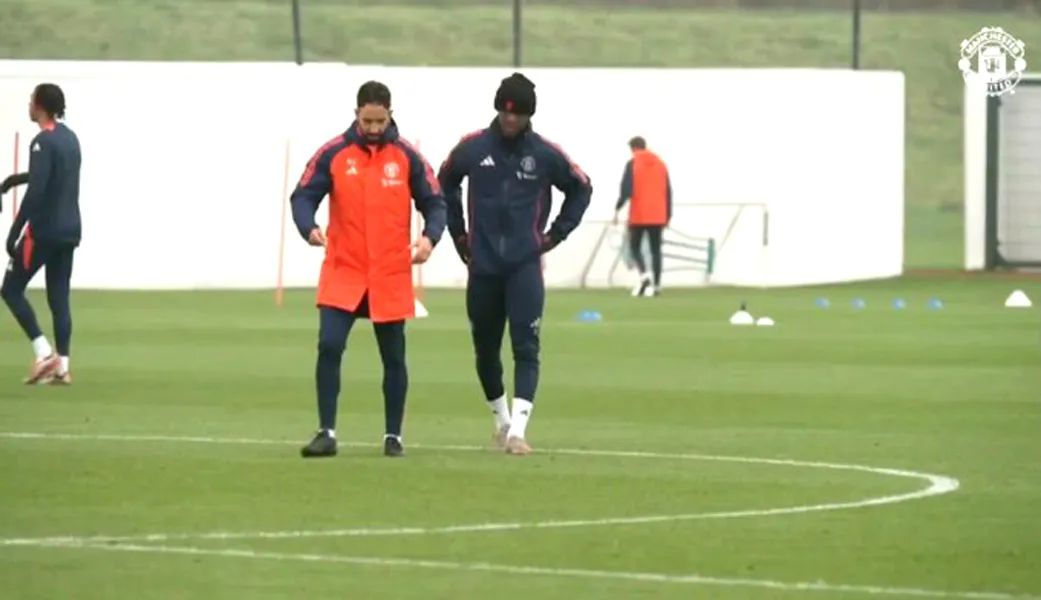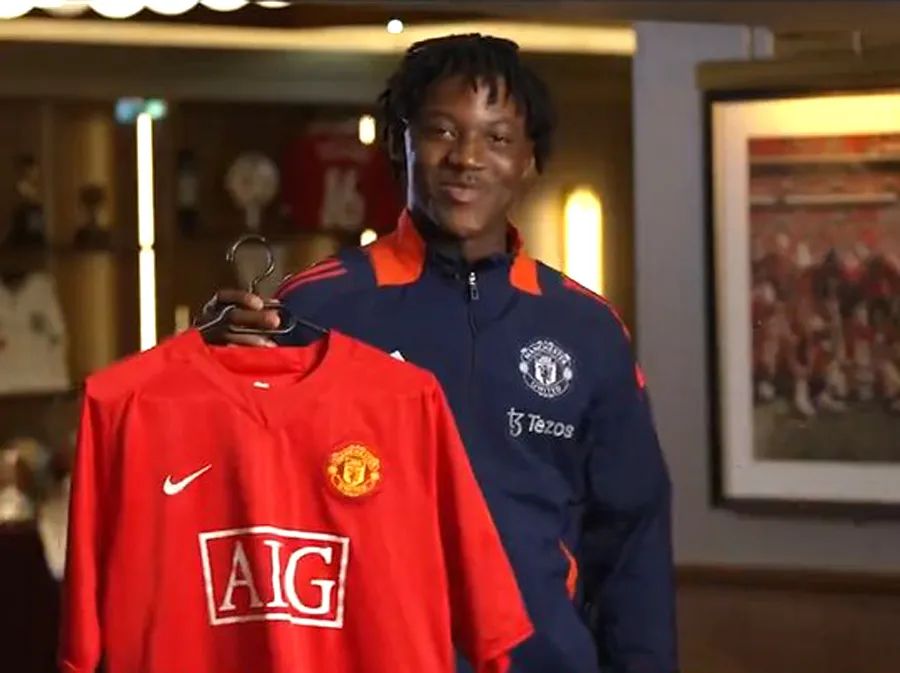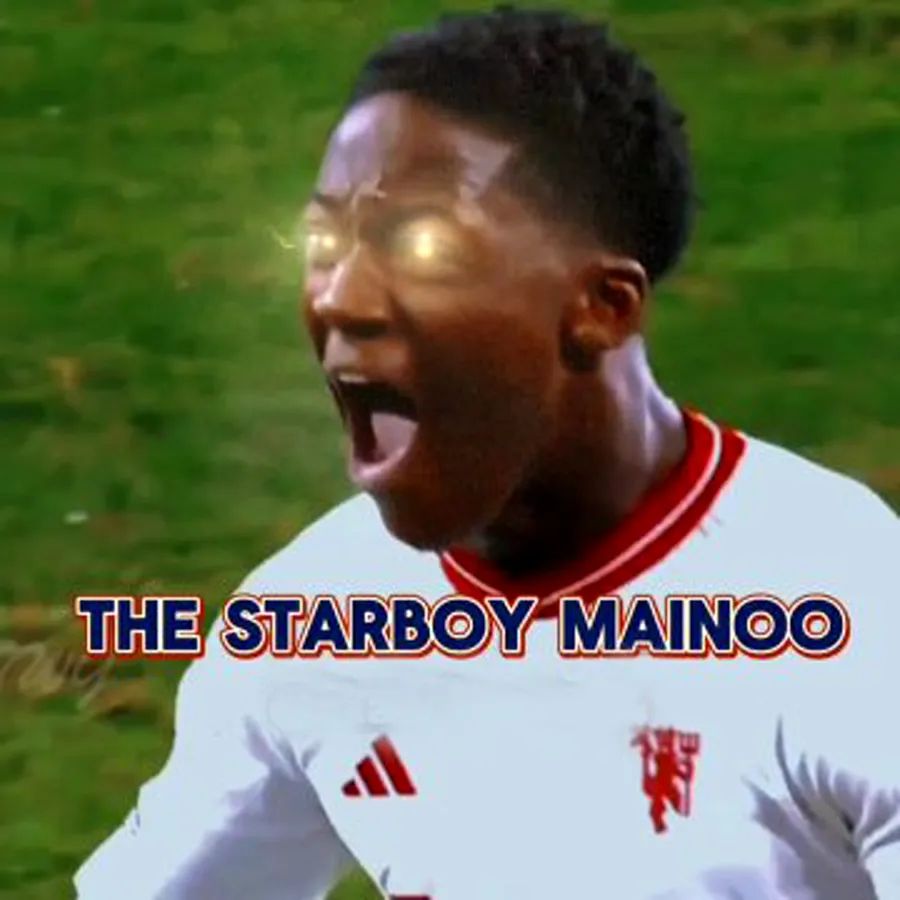Football is ever-changing, and the experiences of Manchester United's new star, Kobe Mino, over the past two years illustrate this point. Last season, he suffered a serious injury at the beginning, and no one expected him to have such a strong finish, becoming the most promising player on the team and even starting for England in the European Cup. However, since the start of this season, the 19-year-old English international has fallen into a slump, performing poorly and missing two months due to a foot injury. Although he performed well against big teams like Manchester City, Liverpool, and Arsenal, he was again in poor form against weaker opponents like Southampton, failing to take a shot on goal and being substituted at halftime. The rumors of demanding a weekly salary of 200,000 pounds have angered fans, who call for him to be sold.
In the plans of Manchester United owner Sir Jim Ratcliffe, Mino is no longer indispensable and can be sold if the price is right. If Mino were in a stable team, he could develop better, but in today's Red Devils, his potential may not be suitable for development, which could depend on his physical development, the team's tactics, and his own thoughts.

In today's Premier League, standards for height, running ability, and physical fitness have significantly increased. Since the 2019/20 season, few clubs have given playing time to midfielders under 175cm tall. From the 2022/23 season to the 2023/24 season, the playing time of midfielders close to 185cm has increased by 25%, with midfielders needing to be tall, fast, and strong.
Pep Guardiola's Manchester City have raised the team's average height, while Mikel Arteta's Arsenal have also steadily increased their height in recent seasons, with the addition of players like Declan Rice, Kai Havertz, and Merino, making the Gunners replace their former nemesis Stoke City as set-piece experts. Klopp and Slott's Liverpool midfield are also aggressive, like Heravenbech, who transformed from an attacking midfielder to a holding midfielder this season.

Even Manchester United's defender Lisandro Martinez found that his height posed greater difficulties in heading the ball. Most Premier League clubs hope that midfielders need not only technical proficiency but also height, strength, and running ability to cope with high pressing and transitions between attack and defense, all of which have become key factors in determining the outcome of matches. Sometimes, if a midfielder is fast and strong enough, they can still overpower and push forward even if their technique is not perfect.
In contrast, Manchester United's current midfield seems somewhat weak. Casemiro and Ugart are the most combative players among them, but they do not have a height advantage and are not good at carrying the ball forward. Eriksen's peak career was also based on passing, with confrontation being his weak point, especially after suffering from heart disease.

Mino is also like this. He became a key figure in last season's Manchester United midfield through his calm ball control and certain skills, but opponents quickly discovered his problems; he had not yet learned physical confrontation.
Having already played 10 times for England, Mino's average number of tackles is still acceptable, but his defensive aggressiveness is not as good as Ugart's, and his defense mainly relies on prediction. Prediction is sometimes just gambling on luck.

Last year, the reason why Mino stood out in Manchester United's midfield was because his calmness was different from his teammates who liked high-risk passes, such as Bruno Fernandes. However, defensive awareness is not his forte; he cannot keenly detect potential dangers in defense and does not have enough physical confrontation to resolve them.
Gary Neville once compared Mino to Bernardo Silva of Manchester City, rather than holding midfielders Fernandinho or Yaya Toure. Mino cannot cover a large defensive area as a defensive midfielder nor is he an offensive playmaker. Running data shows that this season, Mino mostly receives the ball in the backfield to control it and then runs to support his teammates' attacks.

Amorim's 3-4-3 formation has also changed Mino's situation. The 39-year-old Portuguese young coach mainly uses central defenders and wing-backs for early passing and cutting during possession, so a midfielder like Mino, who retreats to receive the ball and then runs forward, is not essential.
On the contrary, the two midfielders in the 3-4-3 system must be tough defensively when out of possession, as Mino did against Manchester City, Liverpool, and Arsenal. Most of Manchester United's midfielders have to adapt to this new requirement; they were not good at it in the past and preferred to leave the task to one or two holding midfielders.
In Amorim's tactics, Mino's most suitable position is the No. 10 role, but the competition there is fierce. The shortcomings of Manchester United's new star are still obvious; he is not good at the most adventurous passes and at best occasionally breaks through and scores from behind. Therefore, Mino's most urgent task is not to increase the number of digits on his paycheck but to improve his skills.
Mino is still under 20 years old and only in his second season of his career; he can still become more complete. His body can be trained, his skills can be honed, and his awareness can be improved; the key lies in his attitude. The "household registration" is now a double-edged sword; if the situation is not suitable, it is entirely possible that he will be sold for 70 million pounds to improve finances.